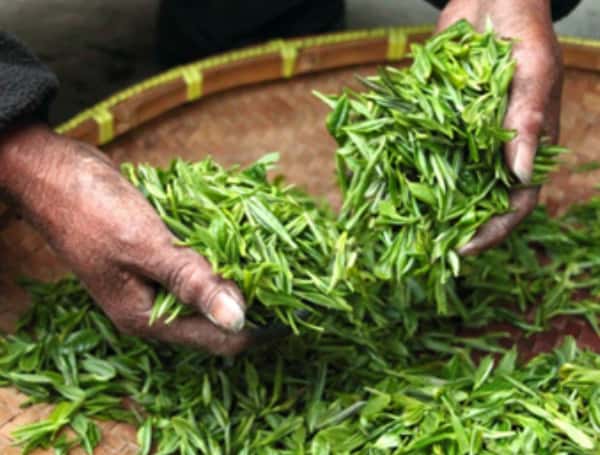Kratom, a tropical tree that belongs to the coffee family, has been used for centuries by ancient cultures for its properties. Kratom, known scie

Kratom, known scientifically as Mitragyna speciosa, has evolved from a little-known herb to a topic of interest in ethnobotanical studies. Hailing from the lush forests of Southeast Asia, its historical use as a traditional remedy provides a fascinating glimpse into cultural practices that date back centuries. By delving into its rich past, we gain insights into how this plant has shaped the lives of those who utilized it long before its global spread. For those curious about the journey of kratom from an indigenous secret to an international subject of debate, this exploration will reveal its multifaceted history. Below, we will traverse the time-honored path of kratom and uncover the story behind it.
The Spread of Kratop: From Local Remedy to Global Phenomenon
The journey of kratom from a local remedy to a global phenomenon began with European explorers encountering the plant in Southeast Asia and documenting its widespread use. This sparked Western interest, which, combined with the expansion of global trade and the Internet, made kratom accessible worldwide. Vendors emerged, offering various strains, and the cross-cultural exchange expanded its uses beyond traditional practices.
In the 20th and 21st centuries, the rise in popularity of natural remedies further boosted kratom’s global presence. Despite legal controversies and debates over its safety, kratom has become a notable part of the health and wellness landscape. Kratom Gecko contributes to the ongoing conversation, providing information and fostering discussion among enthusiasts and researchers.
Exploring the Ethnobotanical Roots of Kratom
The ethnobotanical significance of kratom lies in its symbiotic relationship with Southeast Asian cultures, where it has been used for therapeutic purposes for generations. Local populations harvest kratom leaves to alleviate pain, promote energy, and help overcome opioid addiction. The plant’s versatility as a natural remedy in traditional medicine is showcased through its oral traditions, which involve chewing raw kratom leaves, brewing it into tea, or grounding it into powder.
Researchers aim to decode historical narratives and compile knowledge to preserve traditional uses of kratom, ensuring inherited expertise isn’t lost as globalization reshapes local customs. Ethnobotanical studies offer insight into indigenous reliance on kratom, laying the groundwork for an informed understanding of its place within cultural landscapes.
Unveiling the Geographic Birthplace of Kratom
Kratom, a plant native to Southeast Asia, has its origins in the tropical environments of Thailand, Malaysia, Indonesia, and Bornea. The region’s hot and humid climate provides ideal conditions for kratom trees to thrive, with fertile soils and ample rainfall. The plant’s natural habitat has played a crucial role in its development and cultural integration. Geographic isolation in certain areas allowed for the cultivation of distinct kratom strains with unique alkaloid profiles.
Local communities capitalized on these differences, illustrating the plant’s adaptation to diverse ecological niches. The topography of Southeast Asia also influenced the proliferation of kratom, allowing for the evolution of various cultural practices. The geographic dispersion of kratom is linked to trade routes, as merchants and travelers brought stories and samples of the plant, laying the groundwork for its global journey.
Traditional Uses of Kratom in Southeast Asian Cultures
Kratom, a plant native to Southeast Asian cultures, served multiple social, religious, and economic roles. Workers chewed its leaves for stimulating effects, helping them endure long hours in agricultural and manual industries. Kratom’s capacity to combat fatigue was crucial for daily life. It was also a tool for survival and an integral part of social customs.
Kratom was sacred in certain rituals and ceremonies, often associated with ancestral worship. Its multipurpose nature was also evident in its use as homeopathic remedies, used to treat various ailments. The preparation of kratom-based concoctions was part of the collective identity, reinforcing communal bonds and traditions. In some communities, kratom leaves functioned as currency, highlighting its value beyond mere vegetation.
Kratom in the Modern Era: Legal Battles and Scientific Research
Kratom has been a subject of debate over its legality, safety, and potential therapeutic benefits. As its popularity increases, lawmakers in various countries have varying regulations, with some remaining legal and others classified alongside controlled drugs. This reflects the struggle to balance traditional uses with public health concerns. Scientific research is focusing on understanding the effects of active compounds, primarily mitragynine and 7-hydroxymitragynine, to clarify risks and benefits.
Understanding the varied nature of kratom use and its effects is crucial for establishing safe use guidelines and maximizing its benefits. Advocacy groups and users are advocating for informed policies that support responsible use, emphasizing education, transparency, and standardized industry practices. The fusion of traditional knowledge, scientific research, and regulatory considerations will shape the future of kratom in society.
Overall, the intricate tapestry of kratom’s history paints a picture of a plant that has traversed cultures and sparked global interest. From its ethnobotanical roots to its current standing amidst legal and scientific debates, kratom’s journey serves as a testament to its enduring presence in human society.
Help support the Tampa Free Press by making any small donation by clicking here.
Android Users, Click To Download The Tampa Free Press App And Never Miss A Story. Follow Us On Facebook and Twitter. Sign up for our free newsletter.
